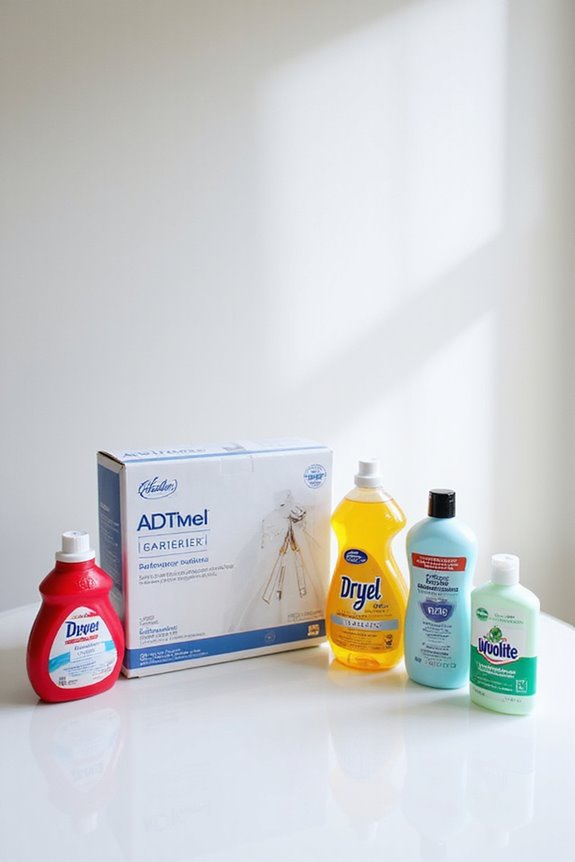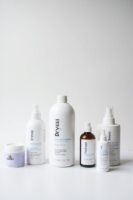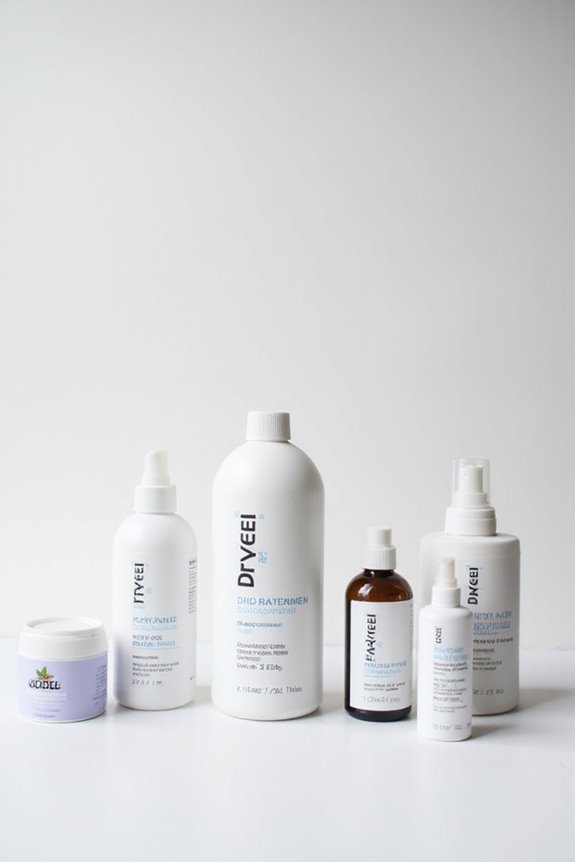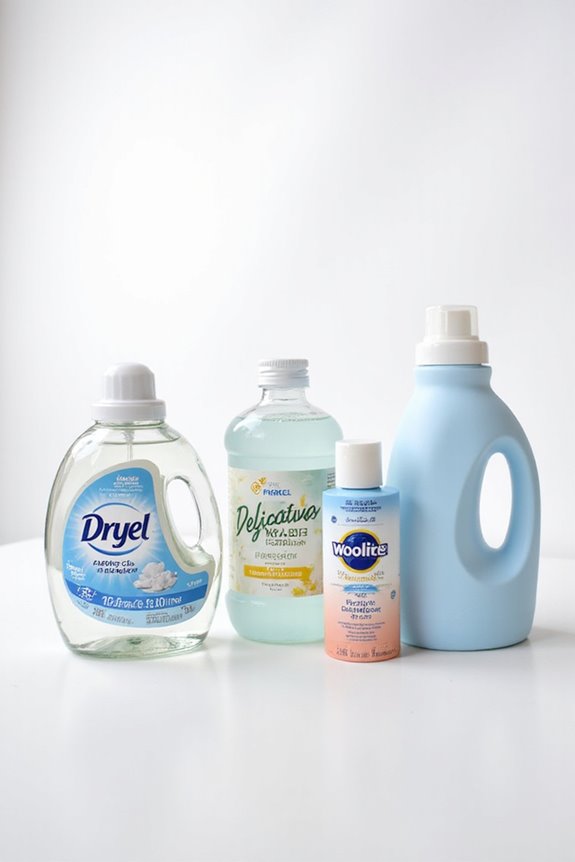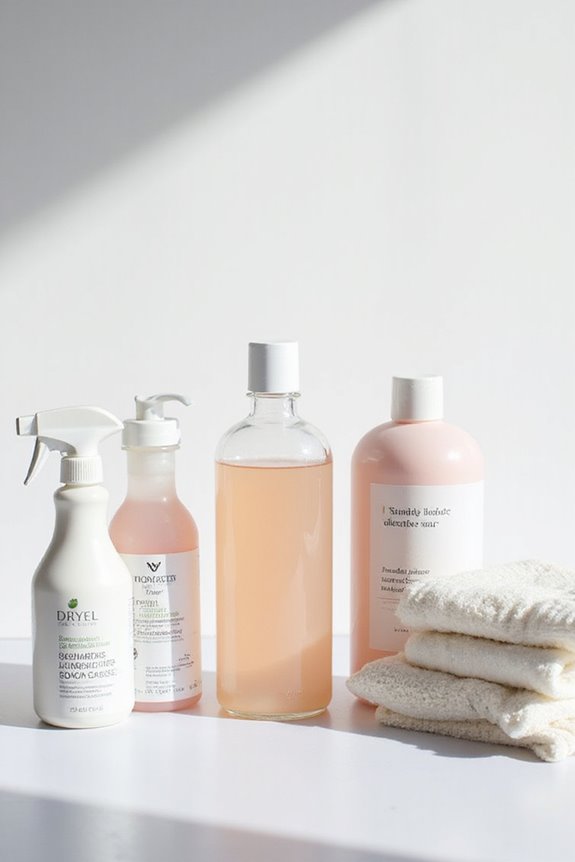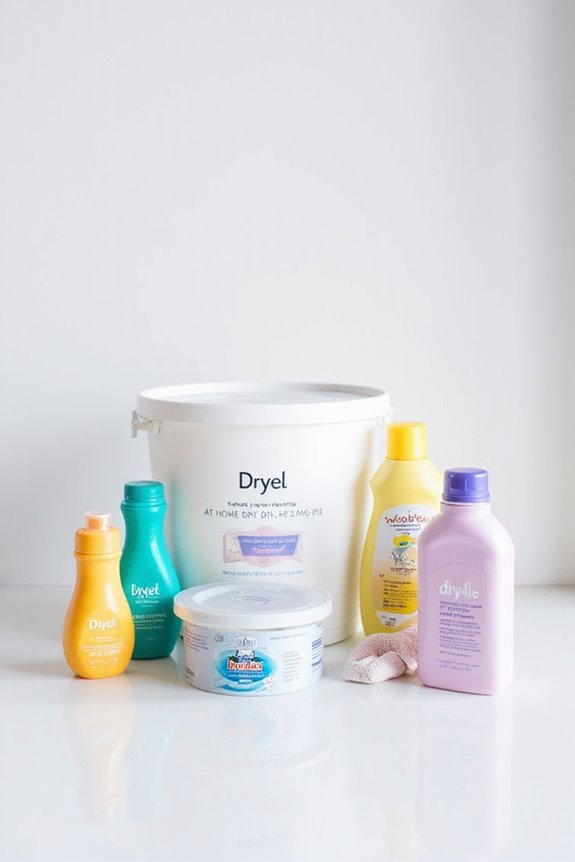Dryel is generally safe for cleaning clothes, but it can damage garments if we don’t use it properly. For instance, overloading the protective bags might result in rips or tears. Also, delicate items with embellishments could be at risk. We recommend checking care labels to verify compatibility. While it’s designed to be gentle, testing a hidden area first can give us peace of mind. Stick around, and we’ll share more helpful tips on keeping our clothes in top shape!
Key Takeaways
- Dryel minimizes mechanical agitation and water exposure, reducing the risk of fabric damage compared to traditional washing or dry cleaning methods.
- Overloading protective bags can lead to rips or tears in garments, so it’s essential to follow usage instructions carefully.
- Delicate embellishments may not withstand the dryer’s conditions, potentially leading to damage during the cleaning process.
- Testing a hidden area of the fabric first ensures compatibility and minimizes the risk of damage from Dryel’s cleaning process.
- While Dryel is generally safe for many fabrics, caution is advised with delicate materials like silk and items labeled “Dry Clean Only.”
Understanding Fabric Shrinkage and Dryel
When we talk about fabric shrinkage, it’s pretty fascinating how many factors can play into it. Different shrinkage mechanisms, like relaxation and swelling shrinkage, can affect various fabric types differently. For example, wool and cotton are particularly sensitive to moisture and heat. We’ve all seen those wavy zippers or puckered seams that scream “I shrank!” after washing.
Using Dryel can help mitigate these issues. Its gentle cleaning process avoids the harsh mechanical actions that lead to shrinkage. Plus, it doesn’t use excessive moisture, which is a bonus for our favorite wool sweaters. This is especially important for maintaining the integrity of fabrics, as hypoallergenic formulations can minimize allergic reactions while preserving the quality of the material. So, if we’re careful with our cleaning methods, we can keep our clothes looking great without the fear of them shrinking into the next size down!
The Impact of Dryel on Fabric Wear and Tear
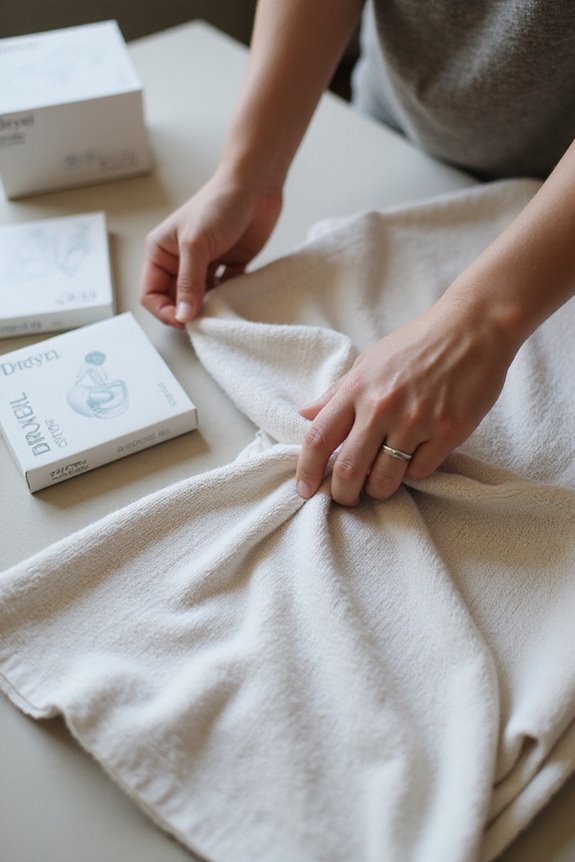
Using Dryel can be a game-changer for our clothes, especially when we think about fabric wear and tear. This in-dryer cleaning method is gentler than traditional washing or dry cleaning, which helps maintain fabric longevity. By reducing mechanical agitation and water exposure, we limit the stress on our beloved garments. However, we need to be cautious. If we overload the protective bags or use them incorrectly, there’s a risk of rips or tears. Plus, delicate embellishments might not fare well in the dryer. So, while Dryel can help extend our clothes’ lifespan, let’s remember to follow the instructions and treat our favorites with care. After all, we want our outfits to last, not get tossed aside!
Color Integrity: How Dryel Affects Dye Stability

Color integrity is something we all care about, especially when it comes to our favorite clothes. We often worry about colorfastness importance and how our cleaning methods impact dye quality. Fortunately, Dryel’s gentle cleaning approach helps maintain color stability. Its low-moisture process reduces the risk of dye bleeding, which is a common issue with traditional washing.
We’ve all seen colors fade after a wash, right? But, with Dryel, we can feel confident that it’s not the cleaning agent causing the issue. Instead, color loss usually stems from poor dye quality or fabric production. So, when we choose Dryel, we’re making a smart choice for our garments. Just remember, selecting color-stable fabrics is key to keeping our clothes vibrant!
Chemical Safety: Assessing Dryel’s Residue Risks
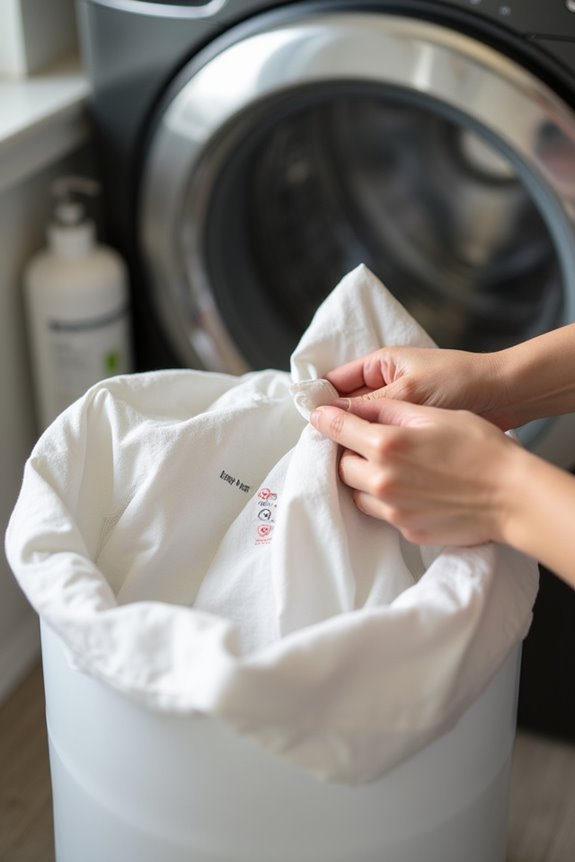
Despite our best efforts to keep our clothes looking great, we often worry about what cleaning products might leave behind. With Dryel, the risk of residue accumulation is minimal. Its non-harsh chemicals are designed to dissipate rather than cling to fabrics. When we follow the instructions, we reduce chemical exposure and avoid those pesky residue traces, especially in fabric folds.
We’ve found that using Dryel in well-ventilated areas helps keep the air fresh while preventing any buildup. However, if we overuse the stain remover or ignore ventilation, residue can sneak in. Always remember to test a hidden area first! By staying mindful, we can keep our clothes clean and residue-free.
Compatibility of Dryel With Various Fabric Types
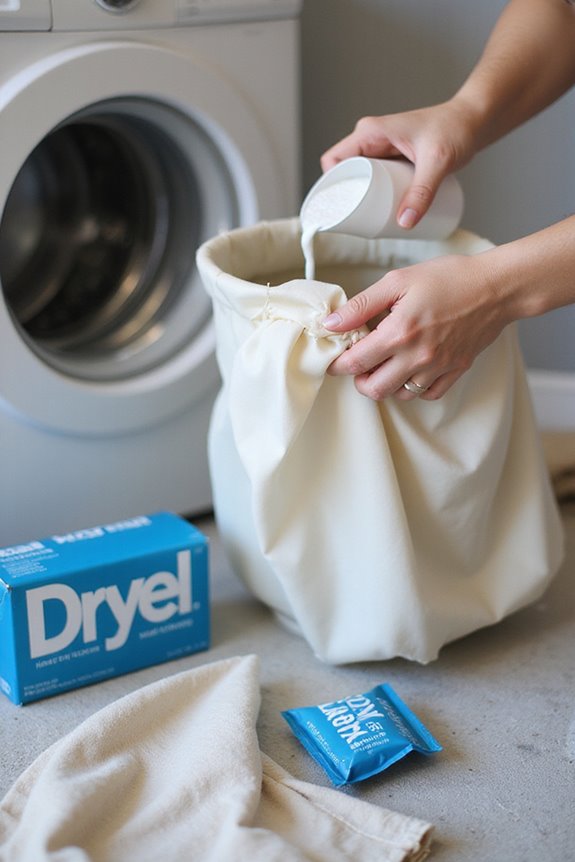
When we think about cleaning our clothes, it’s essential to know which fabrics can handle Dryel without any issues. Dryel works well with many fabric types, like wool, linen, and denim. However, we should avoid using it on items with embellishments, such as sequins or beading, which could suffer damage.
Also, garments labeled “Dry Clean Only” might not fare well, either. While Dryel is a gentle alternative for delicate fabrics like silk, we still need to be cautious. There’s no solid data on how it performs with technical fabrics or cotton, so we recommend checking care labels. Remember, it’s better to be safe than sorry when tackling compatibility issues! Additionally, opting for gentle detergents specifically designed for delicate fabrics can help maintain their quality and longevity.
Best Practices to Minimize Damage When Using Dryel
Using Dryel can be a great way to refresh our clothes at home, but we want to make sure we’re doing it safely. First, let’s stick to medium heat settings. High heat can shrink our favorite garments or weaken the fibers—yikes! It’s also smart to remove clothes right after the cycle to dodge wrinkles. Remember, we shouldn’t crowd the dryer; it needs space to let our clothes tumble freely. Pre-treat stains gently with Dryel’s cleaning cloth, blotting instead of rubbing—trust me, our fabrics will thank us! Finally, avoid fabric softeners with Dryel; they can leave harmful residues. By following these simple fabric care and cleaning techniques, we can keep our clothes looking fresh and fabulous! Additionally, using detergents with stain-fighting enzymes can enhance our laundry routine and ensure a thorough clean.
The Role of Tumble Drying in Fabric Care
Tumble drying plays a big role in how we care for our clothes, and it can be a bit of a double-edged sword. On one hand, it’s super convenient, especially when we’re in a hurry. On the other hand, high heat can cause shrinkage and even color fading in our favorite garments. We’ve all seen that t-shirt shrink a bit too much, right? Plus, the mechanical tumbling can lead to wear and tear, making our clothes less durable over time. To keep our clothes looking great, it’s best to follow care labels and use low heat settings. Remember, while tumble drying can be handy, it’s not always the best choice for every fabric. Let’s treat our clothes right!
Comparing Dryel to Traditional Dry Cleaning Methods
While we all want our clothes to look great and last longer, the choice between Dryel and traditional dry cleaning can be a bit confusing. Dryel offers a gentler approach, using steam and eco-friendly cloths, which helps improve fabric longevity. We can clean our clothes at home in about 20-30 minutes, making it a convenient option for regular cleaning frequency. Traditional dry cleaning, on the other hand, uses harsher chemicals that might damage fibers over time, especially with frequent use. And while it excels at removing tough stains, we found Dryel’s stain removal pen handy for minor issues. Ultimately, for light soils and quick freshening, Dryel’s our friend, but for deep cleaning, we might still need to visit the pros. Additionally, choosing eco-friendly detergents can further enhance the care of our fabrics while minimizing environmental impact.
Addressing Common Concerns About Dryel and Fabric Care
How can we guarantee our favorite clothes stay safe while using Dryel? First, we should consider fabric safety. Dryel’s formula is gentle, but it can still cause mechanical damage if we’re not careful. For instance, delicate embellishments might get lost, and bulky items can lead to improper cleaning. While Dryel effectiveness shines in removing daily grime, it might not tackle tough stains. Testing it on a hidden area is wise! We should also avoid overloading the bag to minimize stress on our clothes. If we keep an eye on fabric types and care instructions, we can enjoy the convenience of Dryel while keeping our beloved garments intact. Additionally, using hypoallergenic and pH-neutral detergents is recommended to ensure delicate fabrics remain protected. After all, nobody wants wardrobe mishaps!
Tips for Testing Fabric Compatibility With Dryel
After we’ve discussed keeping our favorite clothes safe while using Dryel, it’s time to explore the best ways to test fabric compatibility. First, let’s focus on fabric swatch selection. Cut small samples from hidden areas or leftover fabric, and guarantee we include different types like cotton, silk, and wool. This variety helps us see how Dryel reacts with different materials.
Next, we’ll use stain application techniques. Apply common stains like oil or wine on our swatches. Then, treat them with the Dryel Stain Pen before placing them in the Dryel Fabric Protection Bag. After running them in the dryer, we’ll inspect for fading, texture changes, and any lingering stains. It’s a fun way to keep our clothes looking their best! Additionally, consider using eco-friendly ingredients that may be less harsh on fabrics, enhancing the overall protection during the Dryel process.
Frequently Asked Questions
Can Dryel Be Used on Vintage Garments?
We can use Dryel on vintage garments, but let’s prioritize fabric preservation. Caution’s necessary with delicate materials; proper vintage care involves evaluating each piece and considering professional cleaning for the most fragile items.
How Does Dryel Affect Fabric Odor Removal?
Isn’t it great to have options for fabric freshness? When we use Dryel, we often find it effective for minor odor elimination, but stubborn smells can linger, reminding us it’s not a one-size-fits-all solution.
Is Dryel Effective for Heavily Soiled Items?
We’ve found Dryel effective for light stain removal, but it’s not ideal for heavily soiled items. Following washing instructions is essential; it refreshes garments but won’t replace professional cleaning for stubborn stains.
Can I Use Dryel on Dry-Clean-Only Fabrics?
We can use Dryel on dry-clean-only fabrics, but let’s take safety precautions. It’s crucial to check fabric compatibility, especially with delicate materials like silk and rayon, to guarantee we’re preserving our garments effectively.
What Should I Do if Fabric Shrinks After Using Dryel?
If our fabric shrinks after using Dryel, we should try shrinkage remedies like reshaping it gently while damp. Following proper fabric care guidelines will help prevent future issues and maintain our garments’ size.

